Connecticut Hospital Gets 9-1-1 Floor Covering Solution
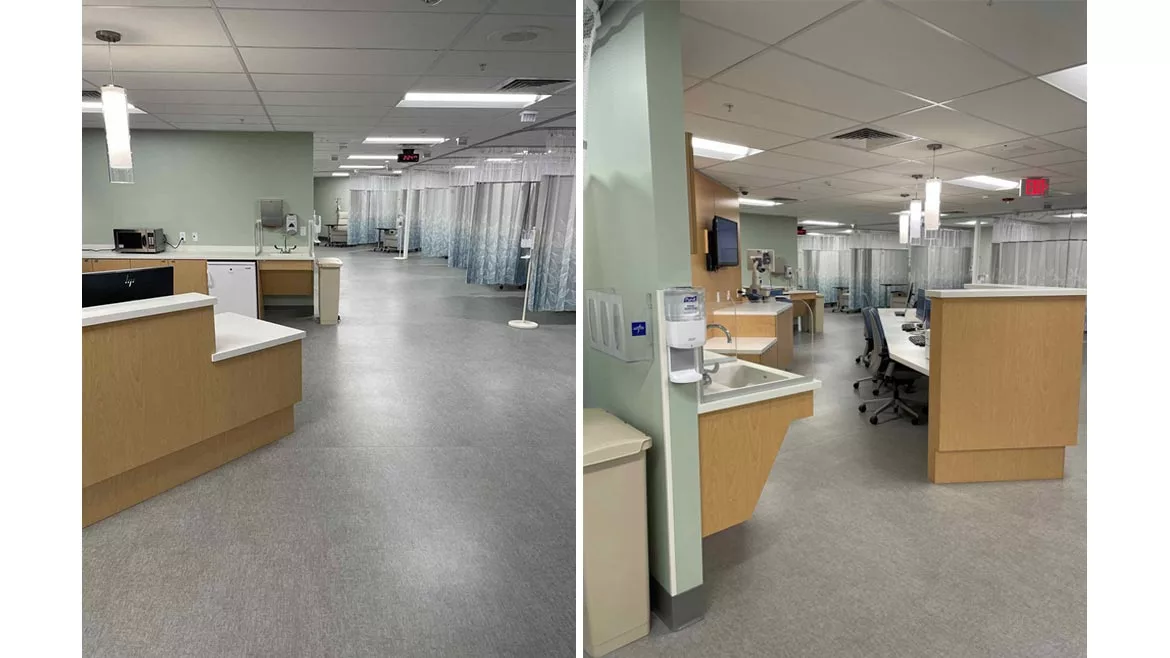
At Yale New Haven Hospital in New Haven, Connecticut, 2021 was a year that many won’t soon forget. The 24-hour emergency department of the hospital’s York Street Campus was awash with COVID-19 patients and was struggling to stay apace inside an area that was not designed for the unprecedented surge. With a rising number of virus cases on top of its usual caseload of illnesses and injuries, the ED was having its own emergency and needed a solution, stat.
To manage its higher patient volumes and make more room for those awaiting hospital admission, the ED opted to create a temporary patient care annex to add 35 patient bays and nine nursing stations. Further raising the construction challenges, the new 10,000-square-foot project would be constructed alongside the existing emergency department area and completed on an exceptionally fast timeline of three months. And the challenges didn’t end there.
A Flooring Project Not for the Faint of Heart
After New York design agency Bam Creative completed the architectural plans for Yale’s ED annex, Petra Construction Corporation of North Haven, Connecticut, took over managing the construction and general contracting. Petra then awarded the flooring work to commercial flooring specialist and INSTALL Warranty Contractor M. Frank Higgins & Co. – an installation contractor Petra had previously worked with on other Yale New Haven Hospital projects.
As soon as Travis Cloud, Higgins & Co.’s project executive and business development vice president, looked at the plans, he knew it was a special case and not just because of the short timeframe.
First, the floor covering work could only be performed at night so that it wouldn’t disrupt patient care activities during the busiest parts of the day and so that other phases of construction could progress. This meant installers would have approximately six hours each night to work on the installation while also ensuring the floor could handle foot traffic by the start of the next day.
The Higgins team would also need to address an existing fire-rated plywood subfloor. Under normal circumstances, installers would remove this subfloor material, as it is notoriously difficult to bond to and makes substrate warranties virtually impossible to obtain. But in this case, removing the plywood would cost too much time and money to be a viable solution.
So, how would Higgins install a new floor over fire-rated plywood next to a bustling emergency department, working only at night, and within three months, all while keeping the substrate warranty intact?
Training and Technology to the Rescue
Faced with the fire-resistant subfloor and time-crunch dilemmas, Cloud knew the project would require outside-the-box thinking from the project management team, the installers, and the flooring manufacturers. That’s when he reached out to Arch 180, Inc., to help find a solution that could put all of the pieces of the Yale puzzle together.
Arch 180 is a manufacturer’s representative, distributor and commercial floor training provider located in Cortland, New York, that represents technology-based solutions for some of the toughest challenges in commercial floor covering. Higgins and Arch 180 had previously tackled other projects together that required both technical material solutions and high-level installation skills.
“The solution Arch 180 recommended for Yale’s ED annex was the Schӧnox Renotex 3D system with AP Rapid Plus,” Cloud said. “This system had to be installed per the manufacturer’s specifications and in a specific sequence. We overcame many challenges during installation, and it proved to be a huge success. It exceeded the expectations of the client, and it provided a superior substrate surface for the finished flooring installation.”
Installation STAT
Once Yale’s existing fire-rated plywood substrate was exposed, the Higgins team immediately began the decoupling process to create a workable, bondable surface over top. Installers cut half-inch mineral wool underlayment sheets to size and laid them out on top of the fire-rated plywood. Then, they closed perimeter gaps using RS 50 foam tape along all of the walls, columns and other vertical structures. This tape was used to prevent the self-leveling AP Rapid Plus compound from seeping underneath. Reinforcement fabric was then overlaid, and the compound was poured on top.
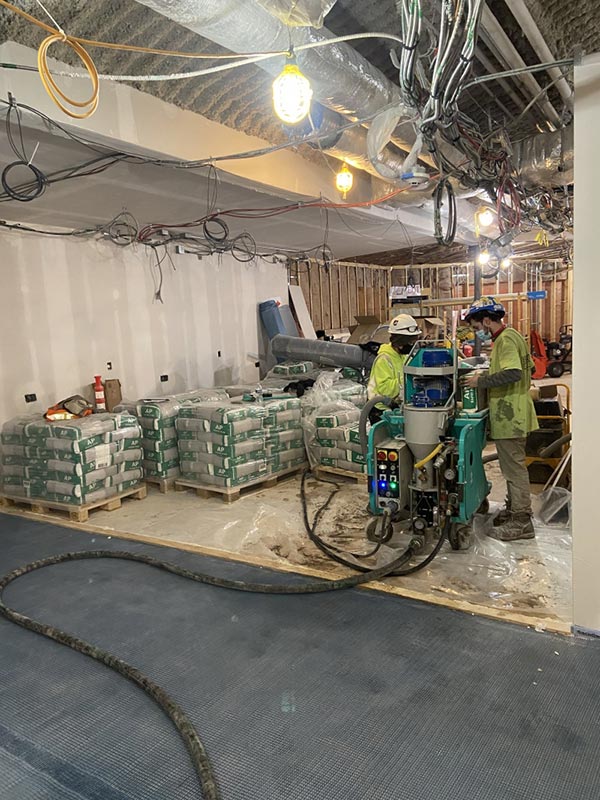
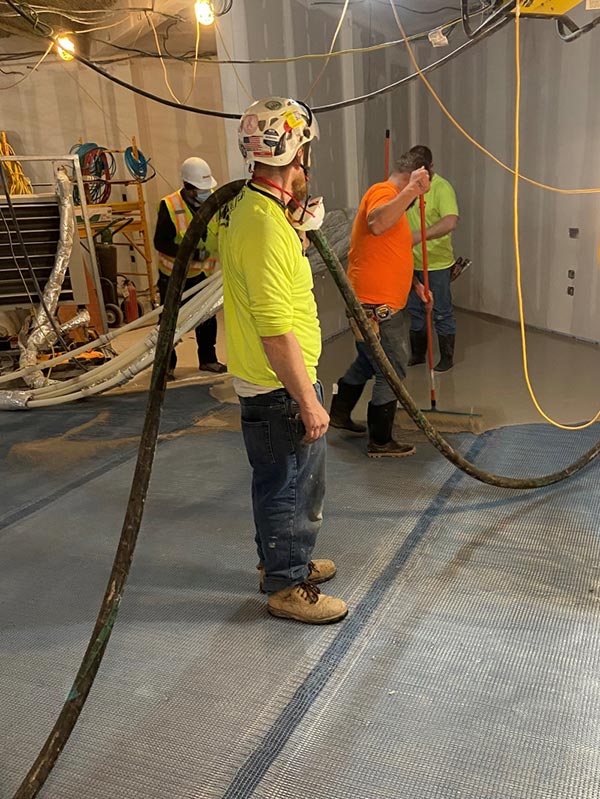
The compound’s active-dry technology provided the fast drying time of cement with the strength, durability and non-shrinkage of synthetic gypsum. These features eliminated the need to demolish and dispose of the previous subfloor and allowed for speedy installation. Once poured, the new substrate was ready for foot traffic in under three hours and ready for final covering within 24 hours.
“These products were much faster to install than a wood subfloor that would have required multiple tradespeople on site to get the subfloor in place,” said Cloud. “Because this was a medical facility, we used the synthetic gypsum leveler poured at ⅝-inch into a fiberglass mat to create a super-strong, solid subfloor that we knew would perform significantly better than a layer of underlayment installed over a wood substrate.”
Within a single day, the Higgins team created a completely decoupled, floating, self-bearing subfloor that was not bonded to the original plywood substrate. The new substrate system also added sound-dampening and fire-resistance benefits that were part of the owner’s specifications.
Monitoring the Warranty’s Vital Signs
The substrate that the Higgins team constructed using the Schӧnox system was swiftly followed by installation of the final sheet vinyl flooring — all while keeping the Schӧnox warranty intact, thanks to Arch 180’s Benjamin Giamichael.
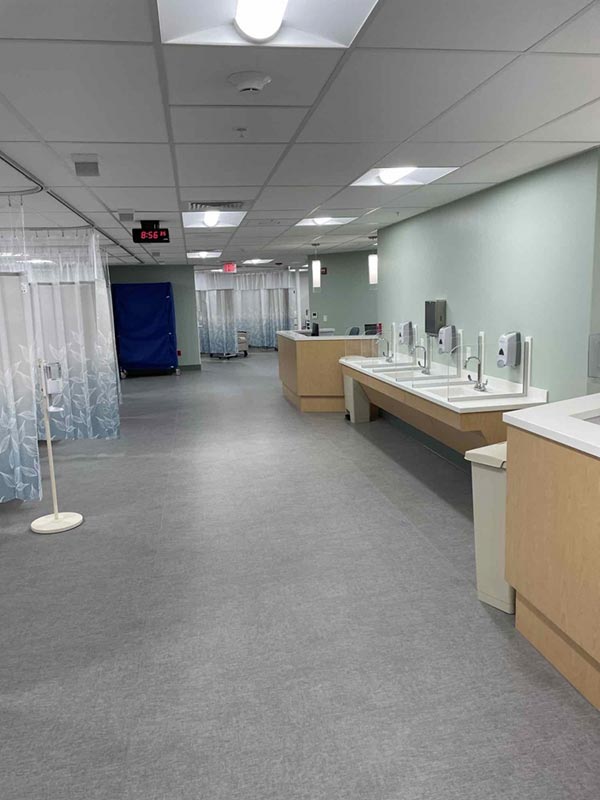
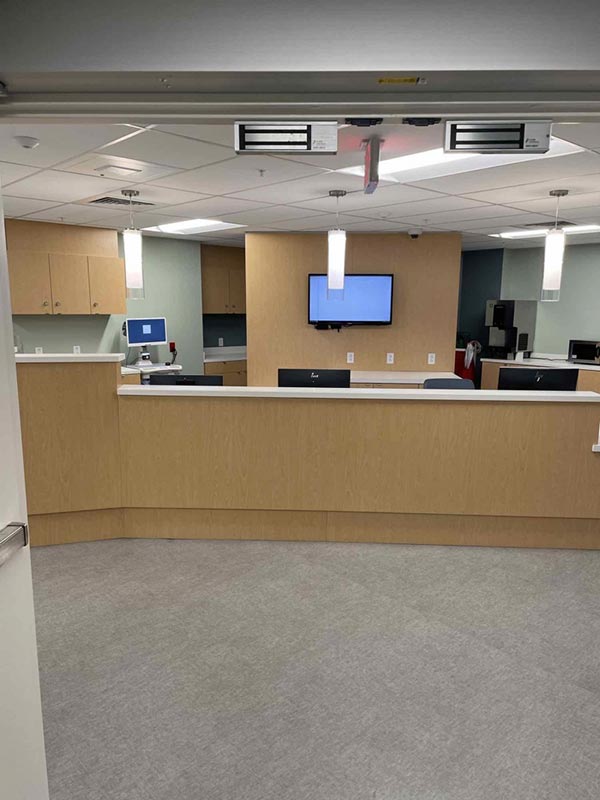
Giamichael, Arch 180 co-founder and Schӧnox representative, was frequently on site at the Yale ED project to assess installation conditions and report back to Schӧnox to confirm the substrate products would be warranted. Giamichael was also instrumental in working with Higgins to evaluate material costs and keep the project within budget.
“Arch 180 has curated a group of solutions that stand out as forward-thinking, technology-driven products in the commercial floor covering space,” Giamichael said. “We want to work with Class A professionals like Higgins who have invested the time and training necessary to work with these types of products. Being an INSTALL Warranty Contractor and a Starnet member tells me what I need to know. In fact, I would question the capabilities of contractors who don’t have these credentials.”
Giamichael also noted that he’s particularly cautious with projects in healthcare environments.
“If there’s a problem with installation work or materials in an emergency department like Yale, you can’t just go back anytime to fix them. You need to make sure you get it right the first time, not just to protect the reputation of the contractors and material manufacturers, but, more importantly, to protect your healthcare clients and their patients. The INSTALL credentials give me that peace of mind.”
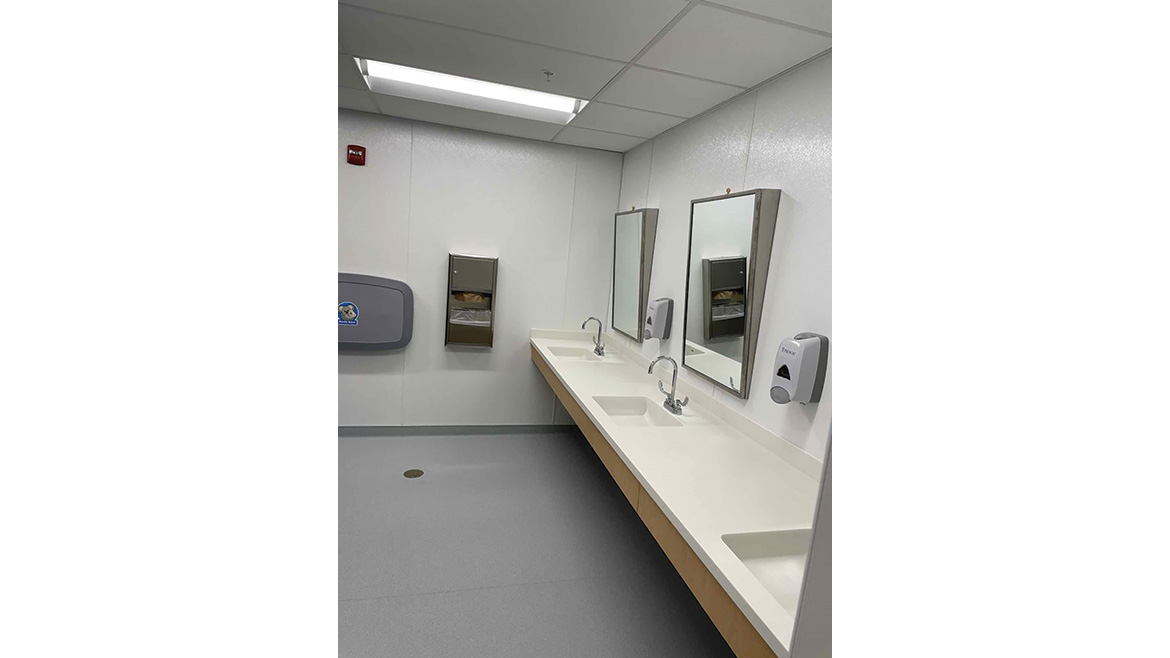
Prescription for Success
Cloud and Higgins & Co. continue to win projects like Yale New Haven Hospital’s ED annex, adding to their credibility as a commercial flooring leader in the Connecticut and Massachusetts construction markets.
“Our INSTALL training affirms that we perform the right floor prep for the situation, and we execute the manufacturer’s installation techniques with consistent precision,” Cloud said. “Our clients instantly recognize the value and quality that accompany this level of training, and they trust us to bring that to their projects.”
Looking for a reprint of this article?
From high-res PDFs to custom plaques, order your copy today!






